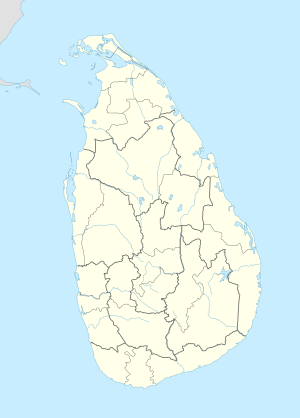|
1985 anti-Tamil violence in Karaitivu
The 1985 anti-Tamil violence in Karaitivu refers to the organised violence directed at the Tamil civilian population of Karaitivu, Ampara by Sri Lankan Muslim mobs aided by Sri Lankan security forces.[1][2][note 1] BackgroundJournalist Qadri Ismail visited the area a month earlier and noted there was no evidence that the Muslims had felt sufficiently threatened to resort to such violence, which would only bring them insecurity.[3] Others accused the Tamil militant groups of extorting and abducting Muslims in the Eastern Province since 1984. Though Tamil militants also extracted money from Tamils in the north, eastern Muslims showed stronger opposition by launching a hartal in Akkaraipattu in early April 1985, which spread to other Muslim villages. This provided the government with an opportunity to incite Muslims against Tamils through the distribution of anti-Tamil leaflets.[4] Ismail suggested some of the extortions were done by agents provocateurs.[1] IncidentOn April 12-14, President J. R. Jayewardene sent M. H. Mohamed, along with his supporters to attack Tamils in the village of Karaitivu (Ampara).[5][3] A mob of 3000 Sri Lankan Muslim youth from surrounding villages[6] with the support of the security forces killed several Tamils, raped several women and burned over 2000 Tamil homes, rendering 15,000 Tamils homeless.[7][5][8][9] Shops were also looted and several Hindu temples destroyed including a temple of Pattini, where the idols were broken.[10] According to Ismail, 11 people were killed and 40 hospitalised during the ensuing violence on these three days. Several politicians including K. W. Devanayagam, the Minister of Home Affairs representing the affected constituency, accused outside forces of instigating the violence.[8] Minister S. Thondaman told the Cabinet that "7 lorries and 2 jeeps filled with thugs had gone from Colombo to the Eastern Province to provoke trouble." Muslim politician A. L. Abdul Majeed stated that certain politicians were trying to provoke ethnic conflict between the two communities who had coexisted peacefully for centuries and urged Muslims to be vigilant.[3] AftermathFollowing the attack at Karaitivu, Tamil militants launched a series of attacks on Muslims at Akkaraipattu and elsewhere in the Batticaloa and Amparai Districts.[4] Muslims from villages near Karaitivu gave assistance to the Tamils there.[6] On 17 April 1985, a further 27 Tamil civilians in the area were murdered by the STF.[7] Frank Jayasinghe, a consultant to the International Center for Ethnic Studies, conducted an independent investigation into the April 12-14 violence and reported some involvement of the STF.[1] See alsoNotesReferences
Information related to 1985 anti-Tamil violence in Karaitivu |
||||||||||||||||||||
